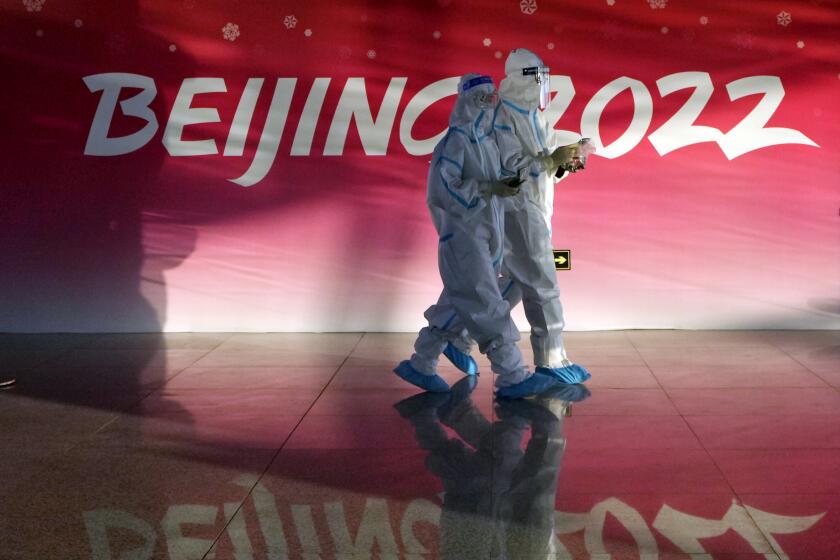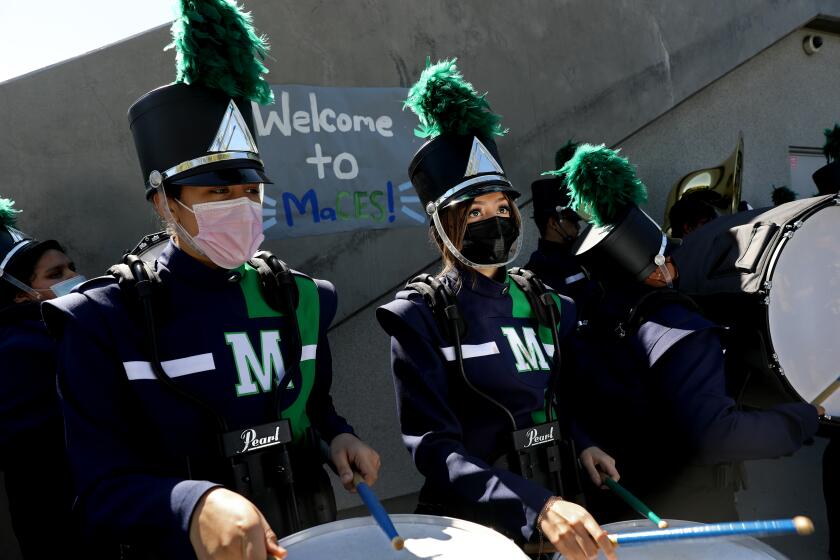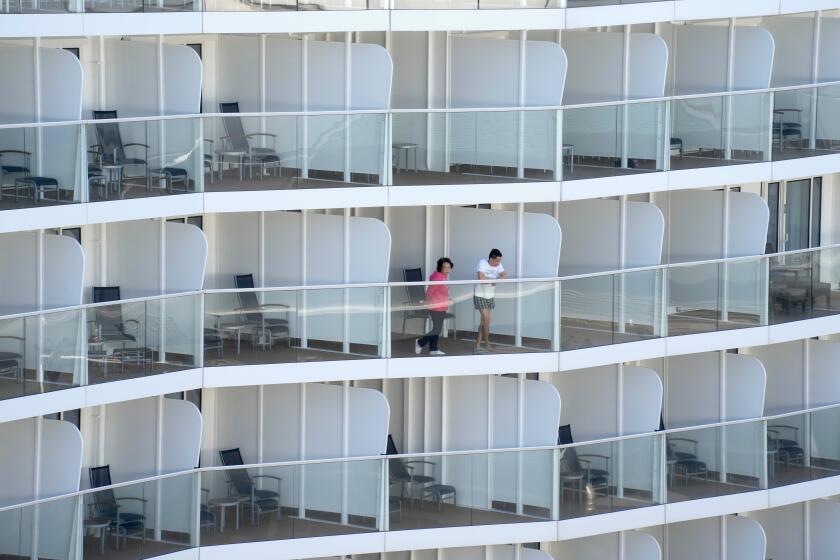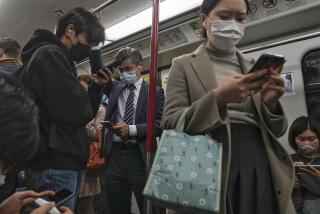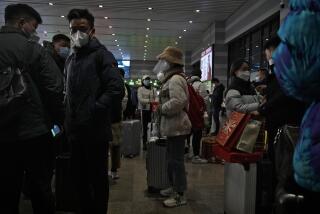Hong Kong orders mandatory coronavirus testing of its entire population
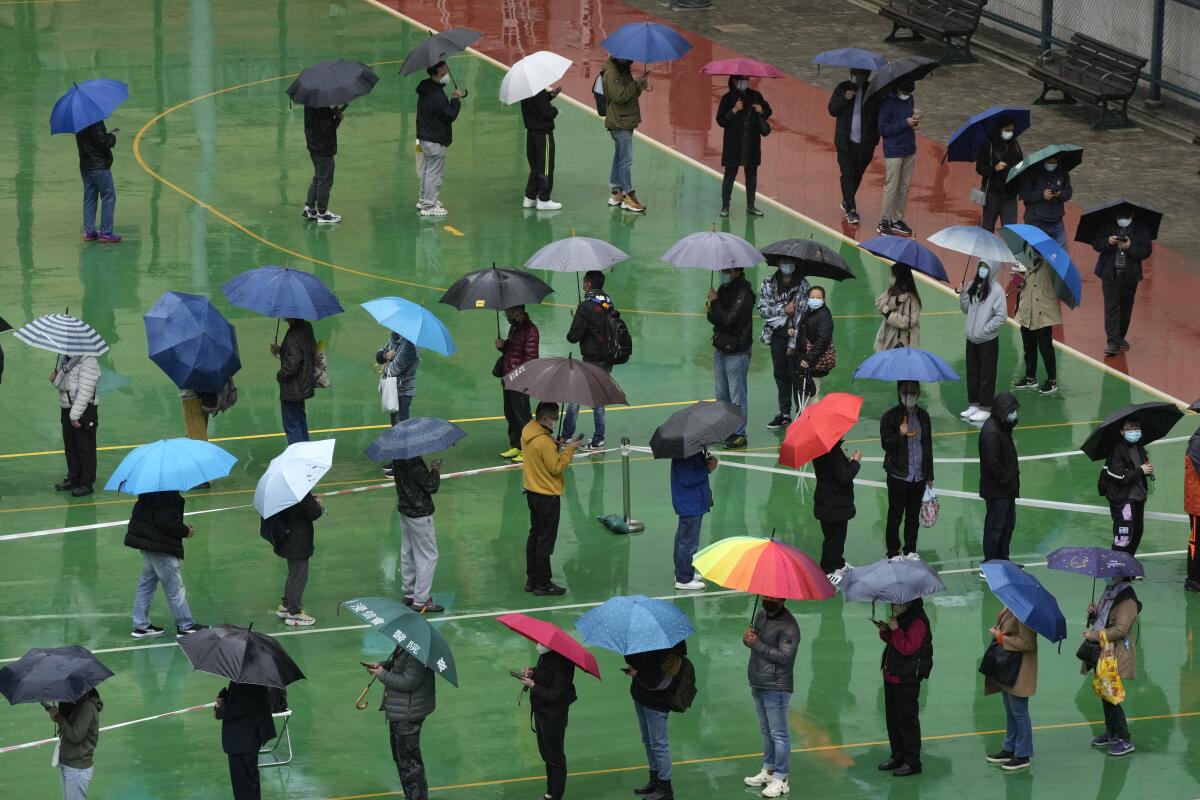
- Share via
HONG KONG — Hong Kong will test its entire population for the coronavirus in March, the city’s leader said Tuesday, as it grapples with its worst outbreak of COVID-19, driven by the Omicron variant.
The population will be tested three times in March, Hong Kong leader Carrie Lam said in a news conference Tuesday.
Lam said that testing capacity would be boosted to 1 million a day or more.
“Since we have a population of some 7 million people, testing will take about seven days,” she said.
Hong Kong has reported about 5,000 new daily infections since Feb. 15, with the rising number of cases threatening to overwhelm its healthcare system. Since the surge began at the beginning of the year, the city has recorded nearly 54,000 coronavirus cases and 145 COVID-19 deaths.
The order for citywide testing comes after mainland Chinese authorities dispatched epidemiologists, health workers and other medical resources last week to help contain Hong Kong’s outbreak.
China’s COVID prevention methods at the Beijing Olympics kept the positive numbers down. However, the effectiveness of some measures was dubious.
Hong Kong has largely aligned itself with mainland China’s zero-tolerance COVID policy, which aims to totally stamp out outbreaks, even as many other countries are shifting their approach to living with the virus.
Lockdowns of entire cities have been imposed in a number of areas on the mainland, but Lam said no such measure was currently being considered in Hong Kong because it was “not realistic.”
She also denied that the central Chinese government was instructing Hong Kong on how to handle the pandemic.
“I reiterate that the central government never issued any instructions on our anti-epidemic work,” she said. “The central government will offer support as needed or upon our request, but of course we will always exchange our views.”
California officials outline a plan that assumes the coronavirus and its variants will ebb and flow, requiring flexibility in such activities as mask wearing.
The zero-tolerance strategy means that Hong Kong authorities often take measures such as locking down entire neighborhoods for mass testing when cases are detected, imposing strict quarantine requirements on travelers and shutting down businesses.
The rapid surge of infections in the city has threatened to overwhelm its healthcare system.
Health officials said last week that hospitals were already at 90% of capacity and isolation facilities were full. People who test positive for the coronavirus must either be admitted to a hospital or a quarantine facility.
Lam acknowledged Tuesday that the city’s isolation facilities were “severely inadequate” and that it was “working very hard with the full support of the central authorities” to build more.
Hong Kong’s two-week ban on flights from the U.S. and seven other countries are part of an attempt to curb an Omicron-fueled coronavirus outbreak.
Current social-distancing measures, such as a ban on dining at restaurants after 6 p.m., will be extended until April 20.
“This is not good news to the sectors affected, but really, at this stage of the pandemic, we have no choice but to take these measures,” Lam said.
She said the city hoped to boost its vaccination rate to 90% by early March.
Other measures announced Tuesday include ending the school year early and moving the normal July-August summer holidays sooner, to March and April, so that schools can be turned into facilities for testing, isolation and vaccination.
Flight bans from countries classified as high risk, including Australia, Canada, India, Nepal, Pakistan, the Philippines, Britain and the U.S., will be extended to April 20.
More to Read
Sign up for Essential California
The most important California stories and recommendations in your inbox every morning.
You may occasionally receive promotional content from the Los Angeles Times.
